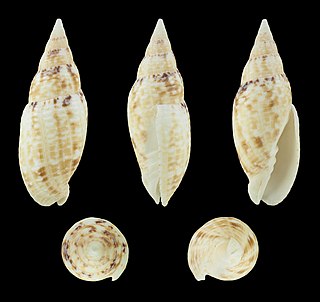
Bavayia is a genus of lizards in the family Diplodactylidae. Species in the genus Bavayia are also known commonly as New Caledonian geckos or bavayias. The genus is native to the remote New Caledonia and Loyalty Islands. The 12 species are moderately small to medium-sized geckos, and are distinguished from other genera by their tail length and the shape of their digits.
The Worshipful Company of Coachmakers and Coach Harness Makers is one of the Livery Companies of the City of London. An organisation of Coachmakers and Wheelwrights petitioned for incorporation in 1630. The petition was granted almost fifty years later, in 1677, when a Royal Charter was granted to the Coachmakers. As coaches have been replaced by cars, the Coachmakers' and Coach Harness Makers' Company has lost its role as a body responsible for controlling the quality of coaches. Instead, it promotes the automobile industry, and also supports various charities.

The blue iguana, also known as the Grand Cayman ground iguana, Grand Cayman blue iguana or Cayman Island rock iguana, is an endangered species of lizard which is endemic to the island of Grand Cayman. It was previously considered to be a subspecies of the Cuban iguana, Cyclura nubila, but in a 2004 article Frederic J. Burton reclassified it as a separate species because according to him the genetic differences discovered four years earlier between the different C. nubila populations warranted this interpretation. The blue iguana is one of the longest-living species of lizard.

The Cuban rock iguana, also known as the Cuban ground iguana or Cuban iguana, is a species of lizard of the iguana family. It is the second largest of the West Indian rock iguanas, one of the most endangered groups of lizards. A herbivorous species with a thick tail and spiked jowls, it is one of the largest lizards in the Caribbean.

Cyclura nubila caymanensis, the Lesser Caymans iguana, Cayman Brac iguana, Cayman Island brown iguana or Sister Isles iguana, is a critically endangered subspecies of the Cuban iguana. It is native to two islands to the south of Cuba: Cayman Brac and Little Cayman, which are also known as the Sister Isles due to their similar shapes and close proximity to each other. The population of this subspecies has been impacted by habitat encroachment by human development and is likely being destroyed due to predation by cats, the population on Cayman Brac has remained particularly small for decades.

Schinia nubila, the camphorweed flower moth or brown flower moth, is a moth of the family Noctuidae. The species was first described by Herman Strecker in 1876. It is found from the US states of Oklahoma to New Jersey, south to Florida and Texas. Its range is expanding in the northeast. Furthermore, recorded from Colorado, Kansas, Oklahoma, Arkansas, North Carolina, South Carolina and Maryland.

Heliothis nubila is a species of moth of the family Noctuidae, described by George Hampson in 1903. It is found in Burkina Faso, the Gambia, Ghana, Guinea, Mauritania, Niger, Nigeria and Senegal.

Quasimitra nubila, common name the particolored mitre, is a species of sea snail, a marine gastropod mollusk in the family Mitridae, the miters or miter snails.

Mylothris nubila is a butterfly in the family Pieridae. It is found in Cameroon, Gabon, São Tomé and Príncipe, the Democratic Republic of the Congo and Uganda.

Anthony Hume Whitaker was a New Zealand herpetologist, contributing a 50-year career of fieldwork, pioneering research and species discoveries. His is still the largest collection of reptile and amphibian specimens donated to Museum of New Zealand Te Papa Tongarewa.

Bavayia cyclura, also known as Günther's New Caledonian gecko or the forest bavayia is a gecko endemic to Grande Terre and Ile des Pins including their neighboring islets in New Caledonia.

Bavayia exsuccida, also known as the Sclerophyll bavayia, is a species of geckos endemic to North Province, New Caledonia.
Bavayia geitaina, also known as the gracile bavayia, is a species of geckos endemic to southern Grande Terre in New Caledonia.
Bavayia goroensis is a species of geckos endemic to southeastern Grande Terre in New Caledonia.
Bavayia pulchella, also known as the pretty bavayia, is a species of geckos endemic to Grande Terre in New Caledonia.

Bavayia robusta, also known as the robust forest bavayia, is a species of geckos endemic to Grande Terre and Île des Pins in New Caledonia.

Bavayia septuiclavis, also known as Sadlier's New Caledonian gecko or the pale-stripe bavayia, is a gecko endemic to southern Grande Terre in New Caledonia.

Dierogekko is a genus of geckos in the family Diplodactylidae. The genus is endemic to the northwest portion of New Caledonia. They are sometimes known commonly as the striped geckos or the New Caledonian geckos. Dierogekko are small geckos with simple, granular scales and subdued patterning of broad longitudinal stripes or spots. They are similar in overall appearance and habit to closely related geckos in the genera Bavayia and Oedodera, and the type species D. validiclavis was once referred to Bavayia.
Paniegekko is a monotypic genus of geckos in the family Diplodactylidae, containing the species Paniegekko madjo. It is endemic to humid montane forests on Mont Ignambi and Mont Panié in the Panié massif of New Caledonia. It was once considered a species of Bavayia, a similar genus of arboreal geckos. Paniegekko madjo is endangered, owing to predation by introduced rodents and cats combined with habitat degradation by wildfires and introduced pigs and deer. It has not been observed since 1998.











